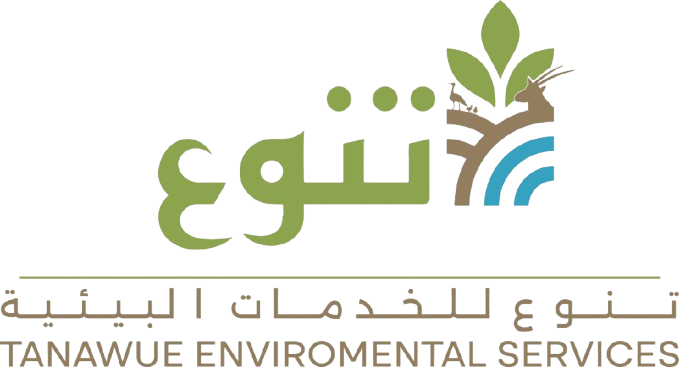Indigenous Birds Breeding & Management
.
At TanawuEnviro, we are committed to the preservation and sustainable management of the UAE’s indigenous bird species. Our Indigenous Birds Breeding & Management services focus on both conservation breeding programs and the long-term management of native bird populations. This service is essential in safeguarding threatened species, maintaining biodiversity, and supporting ecological balance across the UAE.
By combining advanced breeding techniques with habitat management strategies, we ensure that indigenous bird populations are protected, thrive in their natural environments, and can be sustainably managed for future generations.
Key Aspects of Indigenous Birds Breeding & Management:
1. Conservation Breeding Programs
Our conservation breeding programs aim to boost the population of endangered or vulnerable indigenous bird species. By carefully managing captive breeding efforts, we are able to increase the numbers of at-risk species and prepare them for eventual reintroduction into their natural habitats.
- Breeding in Captivity: We use cutting-edge techniques in avian husbandry to ensure the highest survival and reproduction rates.
- Genetic Diversity: Our breeding programs are designed to maintain genetic diversity, which is crucial for the long-term health and adaptability of bird populations.
- Pre-release Conditioning: Birds are prepared for life in the wild through gradual exposure to natural environments, simulated flight training, and familiarization with wild food sources.
2. Habitat Management for Indigenous Birds
Conserving indigenous bird species is not just about breeding—habitat management is critical for ensuring they have suitable environments to thrive in once they are released. We work to create and manage habitats that support the life cycles and migration patterns of native bird species.
- Habitat Restoration: Restoring damaged or degraded habitats to make them suitable for breeding, foraging, and nesting.
- Establishing Safe Nesting Sites: Identifying and securing optimal locations for bird nesting and roosting to reduce predation and human disturbance.
- Creating Wildlife Corridors: Establishing corridors that connect fragmented habitats, allowing for safe movement and migration of birds.
3. Reintroduction Programs
Once indigenous birds are bred in captivity and prepared for release, we implement reintroduction programs to return them to their natural habitats. These programs are designed to bolster wild populations and help restore species that may have been extirpated from certain areas.
- Population Reinforcement: Reintroducing birds into areas where populations are critically low to prevent local extinction.
- Monitoring and Tracking: We monitor reintroduced populations using modern tracking technology to ensure successful adaptation to the wild and continued population growth.
- Post-release Support: Providing ongoing support and habitat management for reintroduced birds to increase their chances of long-term survival.
4. Bird Welfare and Health Management
Maintaining the health and welfare of birds, both in captivity and in the wild, is paramount to successful breeding and management programs. Our team of avian specialists and veterinarians ensures that the birds are kept in optimal health, from hatchlings to adults.
- Veterinary Care: Providing comprehensive healthcare, disease prevention, and treatment for indigenous birds.
- Nutritional Support: Tailored diets to meet the specific nutritional needs of each species.
- Behavioral Enrichment: Creating environments that stimulate natural behaviors, ensuring birds remain physically and mentally healthy.
5. Public Engagement and Education
Engaging the public is essential for long-term conservation success. We work with local communities, schools, and organizations to promote awareness of the importance of indigenous bird species and the need for their conservation.
- Educational Programs: Offering educational workshops and events to foster a connection between local communities and wildlife conservation efforts.
- Collaborative Research: Partnering with universities and research institutions to advance knowledge of indigenous bird species and contribute to global conservation efforts.
Why Fauna Baseline Surveys Are ImportantWhy Indigenous Birds Breeding & Management Matters
Biodiversity Protection
Indigenous birds are vital to the UAE’s ecosystems, contributing to pollination, seed dispersal, and pest control. Protecting these species supports overall biodiversity.Cultural Heritage
Many indigenous bird species are culturally significant in the UAE, and their conservation helps preserve the region’s natural heritage.Ecosystem Health
Birds are often indicators of ecosystem health. By managing indigenous bird populations, we ensure the broader health and sustainability of the ecosystems they inhabit.
Indigenous Birds in the UAE:
The UAE is home to a wide variety of native bird species, some of which are endangered or vulnerable due to habitat loss, climate change, and human activities. TanawuEnviro is dedicated to conserving these species through sustainable breeding and management practices. Our programs focus on key species such as the Houbara Bustard, Greater Flamingo, and various migratory birds, each of which plays a crucial role in maintaining the ecological balance of the region.
Our Indigenous Birds Breeding & Management Process:
Species Identification and Assessment
We begin by identifying priority species for breeding and management, focusing on those most at risk due to environmental pressures or declining population numbers.Captive Breeding
Utilizing controlled environments to maximize breeding success, we ensure that birds are bred in conditions that mimic their natural habitats as closely as possible.Reintroduction and Habitat Management
Once birds are ready for release, we carefully select and prepare natural habitats that offer the best chances for survival and reproduction.Long-term Monitoring
Continuous tracking of reintroduced birds to monitor their progress and adapt management strategies as needed.
